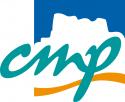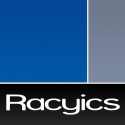UB03 Session 3
Date: Tuesday 20 March 2018
Time: 15:00 - 17:30
Location / Room: Booth 1, Exhibition Area
| Label | Presentation Title Authors |
|---|---|
| UB03.1 | TOPOLINANO & MAGCAD: A DESIGN AND SIMULATION FRAMEWORK FOR THE EXPLORATION OF EMERGING TECHNOLOGIES Authors: Umberto Garlando and Fabrizio Riente, Politecnico di Torino, IT Abstract We developed a design framework that enables the exploration and analysis of emerging beyond-CMOS technologies. It is composed of two powerful tools: ToPoliNano and MagCAD. Different technologies are supported, and new ones could be added thanks to their modular structure. ToPoliNano starts from a VHDL description of a circuit and performs the place&route following the technological constraints. The resulting circuit can be simulated both at logical or physical level. MagCAD is a layout editor where the user can design custom circuits, by placing basic elements of the selected technology. The tool can extract a VHDL netlist based on compact models of placed elements derived from experiments or physical simulations. Circuits can be verified with standard VHDL simulators. The design workflow will be demonstrated at the U-booth to show how those tools could be a valuable help in the studying and development of emerging technologies and to obtain feedbacks from the scientific community. More information ... |
| UB03.2 | GENERATING FULL-CUSTOM SCHEMATICS IN A MIXED-SIGNAL TOP-DOWN DESIGN FLOW Authors: Tobias Markus1, Markus Mueller2 and Ulrich Bruening1 1University of Heidelberg, DE; 2Extoll GmbH, DE Abstract Design time is one of the precious assets in the cycle of hardware design. The top down methodology has been used in digital designs very successfully and now we also apply it for analog and mixed signal designs. Generating most of the structures automatically saves time and avoids errors. A Top Down Design Flow for Mixed Signal Designs is used which generates the schematic structure from the system RNM representation. Since the structural verilog part of the system level design will automatically generate the schematic structure it is only the functional part which is missing and has to be implemented by the analog designer. Some often used blocks can be used as an entry point to partially generate parts of the design in the schematic and furthermore even parts of the layout. We will demonstrate this design method with an example project. More information ... |
| UB03.3 | DISGUISING THE INTERCONNECTS: EFFICIENT PROTECTION OF DESIGN IP Authors: Johann Knechtel1, Satwik Patnaik2, Mohammed Ashraf3 and Ozgur Sinanoglu3 1NYU Abu Dhabi, AE; 2New York University, US; 3New York University Abu Dhabi, AE Abstract Ensuring the trustworthiness and security of electronics has become an urgent challenge in recent years. Among various concerns, the protection of design intellectual property (IP) is to be addressed, due to outsourcing trends for the manufacturing supply chain and malicious end-user. In other words, adversaries either residing in the off-shore fab or in the field may want to obtain and pirate the design IP. As classical design tools do not consider such threats, there is clearly a need for security-aware EDA techniques. Here we present novel but proven techniques for efficient protection of design IP, embedded in an industrial-level design flow using Cadence Innovus. The key idea in our work is that disguising the interconnects is supremely suitable to protect design IP, while inducing only little additional cost and providing strong resilience. We share our customized libraries with the community, and we demonstrate our design flow and its security measures. More information ... |
| UB03.4 | HARDENING THE HARDWARE: A REVERSE-ENGINEERING RESILIENT SECURE CHIP Authors: Abhrajit Sengupta1, Muhammad Yasin2, Mohammed Nabeel3, Mohammed Ashraf3, Jeyavijayan Rajendran4 and Ozgur Sinanoglu3 1New York University, AE; 2New York University, US; 3New York University Abu Dhabi, AE; 4Texas A&M, US Abstract With the globalization of integrated circuit (IC) supply chain, the semi-conductor industry is facing a number of threats, such as Intellectual Property (IP) piracy, hardware Trojans, and counterfeiting. To defend against such threats at the hardware level, logic locking was proposed as a promising countermeasure. Yet, several recent attacks have completely undermined its security by successfully retrieving the secret key. Here, we present stripped-functionality logic locking (SFLL), which resists all existing attacks by hiding a part of the functionality in the form of a secret key. We leverage security-aware synthesis to develop a computer-aided design (CAD) framework that meets the desired security criterion at a minimal cost of 5%, 0.5%, and 8% for power, performance, and area, respectively. Moreover, we taped out a chip, the first such prototype of its kind, by applying our technique on an industry level processor, namely, ARM Cortex-M0 microprocessor in 65$nm$ technology. More information ... |
| UB03.5 | RECONFIGURABLE SELF-TIMED DATAFLOW ACCELERATOR Authors: Danil Sokolov, Alessandro de Gennaro and Andrey Mokhov, Newcastle University, GB Abstract Many applications require reconfigurable pipelines to handle incoming data items differently depending on their values or the operating mode. Currently, reconfigurable synchronous pipelines are the mainstream of dataflow accelerators. However, there are certain advantages to be gained from self-timed dataflow processing, e.g. robustness to unstable power supply, data-dependent performance, etc. To become attractive for industry, reconfigurable asynchronous pipelines need a formal behavioural model and design automation. This demo will present a design flow for the specification, verification and synthesis of reconfigurable self-timed pipelines using Dataflow Structure formalism in Workcraft(https://workcraft.org/). As a case study we will use an asynchronous accelerator for Ordinal Pattern Encoding(OPE) with reconfigurable pipeline depth. We will exhibit the resultant OPE chip fabricated in TSMC90nm to show the benefits of reconfigurability and asynchrony for dataflow processing. More information ... |
| UB03.6 | SPANNER: SELF-REPAIRING SPIKING NEURAL NETWORK CONTROLLER FOR AN AUTONOMOUS ROBOT Authors: Alan Millard1, Anju Johnson1, James Hilder1, David Halliday1, Andy Tyrrell1, Jon Timmis1, Junxiu Liu2, Shvan Karim2, Jim Harkin2 and Liam McDaid2 1University of York, GB; 2Ulster University, GB Abstract The human brain is remarkably resilient, and is able to self-repair following injury or a stroke. In contrast, electronic systems typically exhibit limited self-repair capabilities, and cannot recover from faults. We demonstrate a bio-inspired approach to self-repair that allows an autonomous robot to recover from faults in its artificial 'brain'. Astrocytes are support cells in the human brain that interact with neurons to regulate synaptic activity. We have modelled this interaction to create a spiking neural network that can self-repair when synapses between neurons are damaged, by strengthening redundant pathways. We demonstrate a robot platform controlled by a self-repairing spiking neural network that is implemented on an FPGA. We demonstrate that injecting faults into the synapses of the network initially causes the robot to behave erratically, but that the neural controller is able to automatically repair itself, thus allowing the robot to resume normal function. More information ... |
| UB03.7 | T-CREST: THE OPEN-SOURCE REAL-TIME MULTICORE PROCESSOR Authors: Martin Schoeberl, Luca Pezzarossa and Jens Sparsø, Technical University of Denmark, DK Abstract Future real-time systems, such as advanced control systems or real-time image recognition, need more powerful processors, but still a system where the worst-case execution time (WCET) can be statically predicted. Multicore processors are one answer to the need for more processing power. However, it is still an open research question how to best organize and implement time-predictable communication between processing cores. T-CREST is an open-source multicore processor for research on time-predictable computer architecture. In consists of several Patmos processors connected by various time-predictable communication structures: access to shared off-chip, access to shared on-chip memory, and the Argo network-on-chip for fast inter-processor communication. T-CREST is supported by open-source development tools, such as compilation and WCET analysis. To best of our knowledge, T-CREST is the only fully open-source architecture for research on future real-time multicore architectures. More information ... |
| UB03.8 | FPGA-BASED HARDWARE ACCELERATOR FOR DRUG DISCOVERY Authors: Ghaith Tarawneh, Alessandro de Gennaro, Georgy Lukyanov and Andrey Mokhov, Newcastle University, GB Abstract We present an FPGA-based hardware accelerator for drug discovery, developed during the EPSRC programme grant POETS (EP/N031768/1) in partnership with e-Therapeutics, an Oxford based drug discovery company. e-Therapeutics is pioneering a novel form of drug discovery based on analyzing protein interactome networks (https://www.youtube.com/watch?v=wQFpTtuzrgA). This approach can discover suitable drug candidates much more efficiently compared to wet lab testing but requires considerable computing power, particularly because commodity computers are generally inefficient at analyzing large-scale networks. The presented accelerator, consisting of an FPGA board with a silicon-mapped protein interactome plus accompanying software formalisms and tools, can deliver a 1000x speed up in this application compared to software running on commodity computers. We will showcase demos in which we run in-silico analysis of protein interactomes to test drug effects and visualize the results in real-time. More information ... |
| UB03.9 | CIJTAG: CONCURRENT IJTAG DEMONSTRATOR Author: Krenz-Baath René, Hamm-Lippstadt University of Applied Sciences, DE Abstract The flexibility of on-chip instrument access enabled by IEEE 1687 (IJTAG) has shown tremendous improvements in modern industrial designs. Due to a constantly increasing spektrum of tasks performed through 1687 networks such as performing test operations during production test, on-line test operations as well as operating health monitors the test requirements in modern designs increase dramatically with respect to test performance, responsiveness and low power. These requirements have a major impact on the design of such test infrastructures. In complex designs with large test infrastructures it might be challenging to comply with the large spectrum of requirements. Concurrent IJTAG is novel partitioning concept to a reconfigurable test infrastructure in order to enable an independent operation of different sections of the test infrastructure. The proposed demonstrator shows the first FPGA-based implementation of concurrent IJTAG test infrastructures. More information ... |
| UB03.10 | CLAVA-MARGOT: CLAVA + MARGOT = C/C++ TO C/C++ COMPILER AND RUNTIME AUTOTUNING FRAMEWORK Authors: João Bispo1, Davide Gadioli2, Pedro Pinto1, Emanuele Vitali2, Hamid Arabnejad1, Gianluca Palermo2, Cristina Silvano2, Jorge G. Barbosa1 and João M. P Cardoso1 1Porto University, PT; 2Politecnico di Milano (POLIMI), IT Abstract Current computing platforms consist of heterogeneous architectures. To efficiently target those platforms, compilers can be extend with code transformations and insertion of code to interface to runtime autotuning schemes, which tune application parameters according to: the actual execution, target architecture, and workload. We present an approach consisting of a C/C++ source-to-source compiler (Clava) and an autotuner (mARGOt ). They are part of the toolflow of the FET-HPC ANTAREX project and allow parallelization, multiversioning and code transformations in the context of runtime autotuning. mARGOt is an autotuner that allows application adaptation to changing conditions and goals. Clava is a source-to-source compiler to transform C/C++ programs, including code instrumentation and integration with components such as mARGOt. We will demonstrate how to use Clava to integrate the mARGOT autotuner in an example application, and several mARGOt functionalities exposed through a Clava API. More information ... |
| 17:30 | End of session |
| 18:30 | Exhibition Reception in Exhibition Area The Exhibition Reception will take place on Tuesday in the exhibition area, where free drinks for all conference delegates and exhibition visitors will be offered. All exhibitors are welcome to also provide drinks and snacks for the attendees. |











